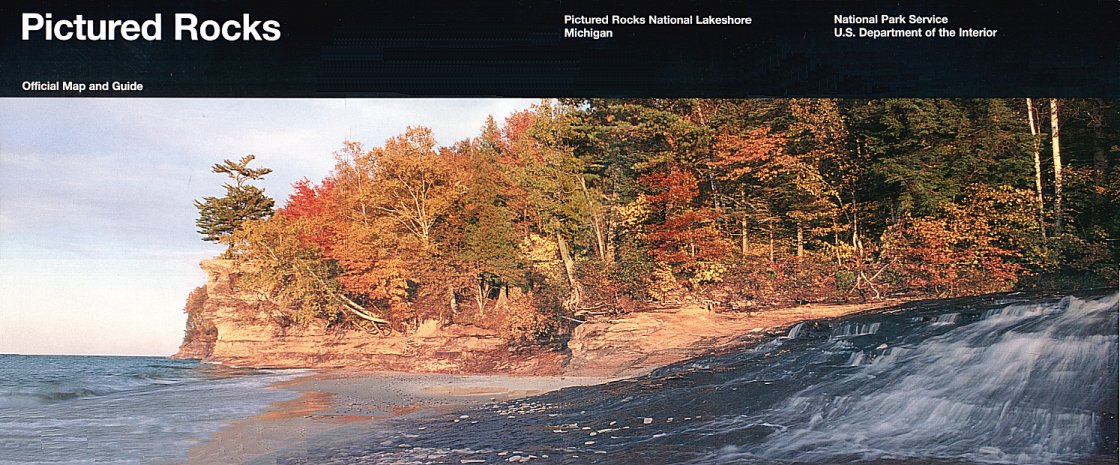Pictured Rocks Nat'l Lakeshore
July 2003
 |
![]()
 |
![]()
After we left Craig and Tammy's, we traveled up to the north side of the upper penninsula of Michigan and
visited several very scenic places. Enjoy the pictures below, it's a "must see" area in our book.
This place of beauty was authorized as the
country's first national lakeshore in 1966 to preserve the shoreline,
cliffs, beaches, and dunes, and to provide an extraordinary place for recreation and discovery. Little more than
six miles across at its widest point, Pictured Rocks National Lakeshore hugs Lake Superior's shore for nearly 40
miles. these 72,000 acres protect a portion of lake Superior's shoreline and watershed.
The name "pictured rocks" comes from the streaks of mineral stain that decorate the face of the sculptor cliffs.
The ramparts of the cliffs are composed of cambrian sandstone of the Munising Formation. The streaks on the
cliffs occur when groundwater oozes out of crakes. The dripping water contains iron, manganese, limonite, copper
and other minerals that leave behind a color stain as water trickles down the cliff face.
![]()
To view any picture on a larger scale just click on it.
Then click your browsers back button to return.
 This is the Tahquamemon River showing the island with the Lower Falls on either side of it. |
![]()
This is the land of Longfellow's Hiawatha - "by the rushing Tahquamenaw" Hiawatha built his canoe. Long before the white man set eyes of the river, the abundance of fish in its waters and animals along its shores attracted the Ojibwa Indians, who camped, farmed, fished and trapped along its banks. Tahquamemon Falls State Park encompasses close to 40,000 acres stretching over 13 miles. Most of this is undeveloped woodlands. The centerpiece of the park, and the very reason for its existence, is the Tahquamemon River, with its waterfalls. We didn't get many pictures because our digital camera is on the blink, sometimes it takes a picture and sometimes it doesn't. The Upper Falls is one of the largest waterfalls east of the Mississippi. It has a drop of nearly 50 feet and is more than 200 feet across. A maximum flow of more than 50,000 gallons of water per second has been recorded cascading over these falls. Four miles downstream is the Lower Falls, a series of five smaller falls cascading around an island. Although not as dramatic as the Upper Falls, they are equally magnificent. The falls can be viewed from the river bank or from the island, which can be reached by rowboat rented from a park concession. The island walk affords a view of the falls in the south channel.
![]()